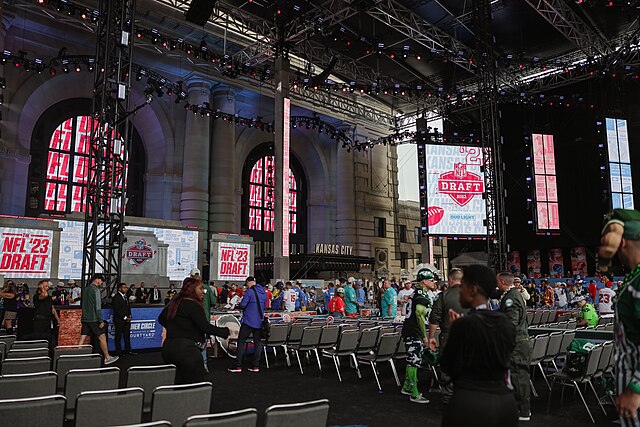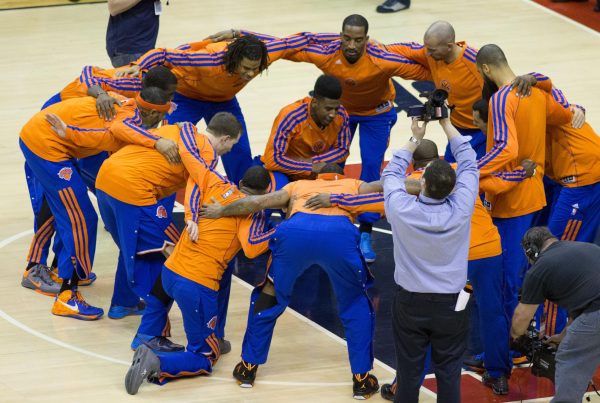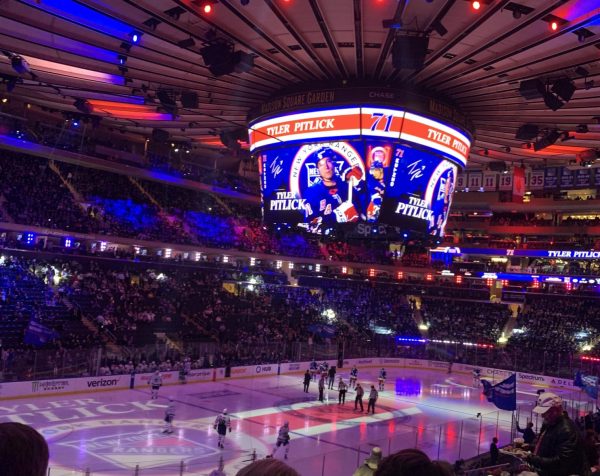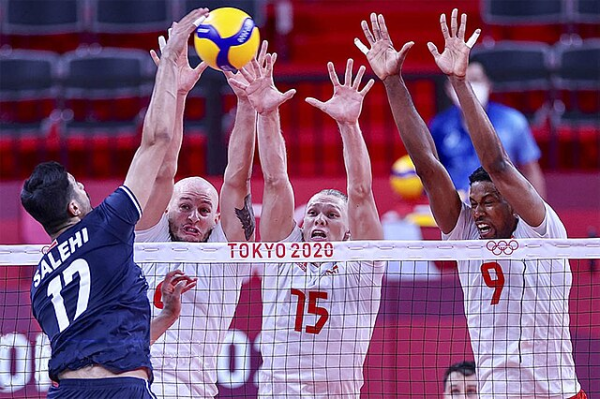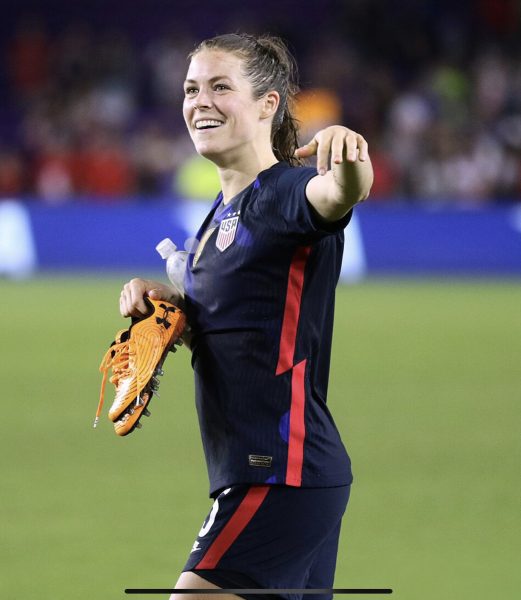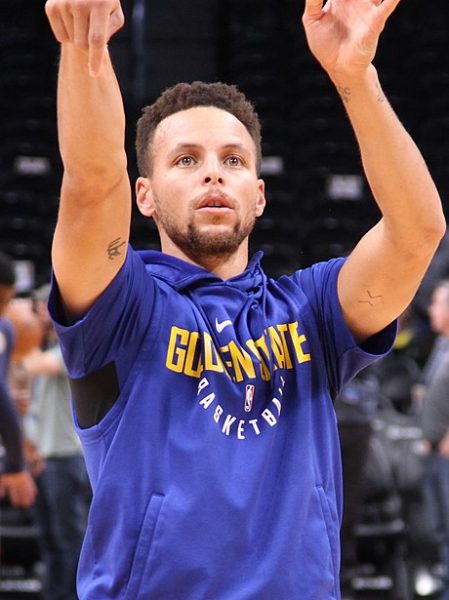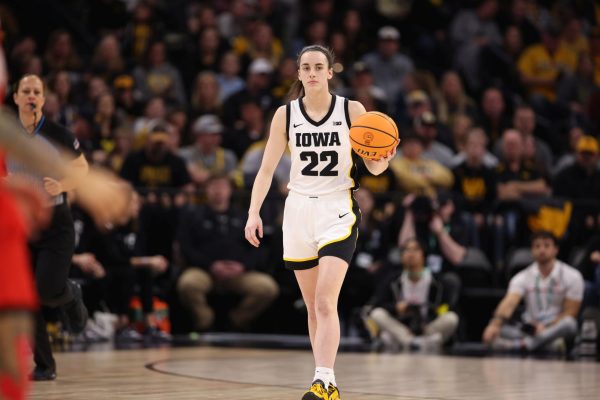A Deep Dive Into the 2023 NFL Offseason
Every NFL offseason brings excitement, mystery, and a flurry of trades, free agent signings, and eye-opening draft selections. The 2023 season, while slightly tempered compared to its predecessor, was no different.
This 2023 NFL Draft, pictured here, took place in Kansas City, Missouri. The draft and free agency make up the most important parts of the offseason, enabling teams to make additions to their rosters that could prove pivotal in the upcoming season. Photo Credit: Cpl. Alexis Moradian, Public domain, via Wikimedia Commons
It’s that time of year again, as the NFL’s offseason slowly simmers to a close. Training camp is on the horizon, a prelude to the season that edges ever so closer by the day.
Before the players put on their helmets, pads, and gear — ready to hit the gridiron for pre-season workouts — I find a need to look back at the offseason, a period that fundamentally changes the league, its players, and its teams.
Of course, the offseason isn’t an enjoyable event for everyone, but I beg to differ. Unlike a game of football, the offseason is prolonged, spreading the excitement across weeks, not hours. From the middle of March to early May — a period encompassing free agency, the draft, and the release of the regular season schedule — something is always brewing.
However, while drawn out, the offseason also comes with its moments of immediacy. In the first wave of free agency, almost half of the Top 100 players on the market find a new home within the two-day legal tampering period. Twitter alerts flash almost instantaneously, with no one ever knowing which domino will be the next to fall into place. During the draft, a three-day-long extravaganza, picks are made one after another as months-long mysteries unmask themselves before our very eyes.
This combination, as well as all the theatrics involved, make the offseason so fascinating to explore. As I discussed last year, the 2022 offseason did not disappoint by any stretch of the imagination. However, if you’re more curious about this year’s festivities, I’ve got you covered.
Quarterback Qualms
Every offseason, quarterbacks dominate the storylines. They are the signal callers, often responsible for carrying their teams to either victory or defeat. In a league that has become so offensive-minded, teams have realized the need to have — and keep — star QBs on their rosters. This offseason continued to prove that idea right.
The biggest question mark in the free agency market surrounded Lamar Jackson, who most experts viewed as the top player on the market. The Baltimore Ravens wanted to extend Jackson — a former MVP and one of the league’s most versatile athletes — to a long-term extension, but the two sides failed to work out a deal before the March 7th franchise tag deadline. As a result, the team placed a non-exclusive tag on Jackson, a risky move by the Ravens’ front office. The non-exclusive tag allowed other teams to negotiate with Jackson and sign him, but only if the Ravens didn’t match the offer and the team signing him was willing to provide the Ravens with two future first-round picks.
Ultimately, Jackson’s lack of an agent made it difficult for other teams to negotiate, making a return to the Ravens much more likely. The team bolstered their wide receiver group — a position where they had struggled last year — by bringing in Odell Beckham Jr. and promising Jackson to draft a first-round receiver (which they later did). Those moves seemed to make a difference, as Jackson finally agreed to a five-year, $260 million deal just hours before the draft, shattering Jalen Hurts’ record value contract with the Eagles that had been finalized only a week and a half prior.
The secondary storyline for QBs in free agency surrounded Derek Carr, who the Raiders released in February after nine seasons with the team. Carr, a 4-time pro bowler who fell out of favor with the organization after a disappointing season, had many suitors across the league, most notably the Jets, Saints, and Colts.
While the Jets seemed Carr’s preferred destination, the team hoped to hold out for answers from other options before settling on a deal. Yet, Carr seemed eager to pen an agreement before the opening of free agency, primarily as a means of keeping his value above QBs on the market.
For this reason, Carr decided on the Saints, signing a four-year, $150 million deal to become the team’s next starting QB. I laud the Saints for making an upgrade at the position, especially in a league where having a strong QB is essential. However, the team has underlying issues at hand that put the deal into question.
The Saints came into the offseason with massive cap issues, as the team needed to clear approximately $20 million in cap space before the beginning of the new league year. Adding on Carr’s $35 million-per-year contract made restructuring existing contracts and upgrading the roster much more complex while kicking tons of money and dead cap hits onto next year’s bill.
Unfortunately, this move by the Saints seems destined for failure. The Saints are average at best and certainly not good enough to contend for a Super Bowl or an NFC Championship. With the likes of the Eagles, 49ers, Cowboys, Vikings, and a vastly improved Lions squad fighting for NFC dominance, the team’s only opportunity this season seems to be a division crown. In an NFC South that, on paper, appears to be the weakest in the league, such an achievement isn’t necessarily a roaring success.
The Raiders made a move of their own, replacing Carr with Jimmy Garoppolo. Garoppolo is a serviceable QB but has dealt with a fair share of injuries throughout his career. Coming off an injury-riddled 2022 season with the ‘Niners, he failed a physical with the Raiders, causing many to believe that the deal was in jeopardy. Through a clause in his contract, Garoppolo must pass a physical before the beginning of the regular season, risking his entire contract (including guaranteed money) if he fails to do so.
Of course, I have yet to discuss the elephant in the room: Aaron Rodgers. The Rodgers saga was the talk of the offseason, a prolonged spectacle that lasted almost two months from start to finish. After Rodgers shared his discontent with the Packers organization — something he has indeed done on multiple occasions in past offseasons — following a disappointing 2022 season, teams started picking up the phone. This time, unlike in years past, the Packers answered.
The most interested of those teams, the Jets, needed a serious upgrade at the position after two lackluster seasons with sophomore QB Zach Wilson. The Jets finished 2022 with a 7-10 record, despite the team’s top-five defense and emerging stars on the offensive side in RB Breece Hall and WR Garrett Wilson. The result sent the front office a clear message: if they could land themselves an elite signal-caller, the Jets could be Super Bowl contenders.
As the offseason moved into full swing, the Packers granted the Jets permission to speak to Rodgers, as members of their ownership and coaching staff headed to Southern California to meet the famed QB face to face. A week later, on the Pat McAfee Show — a program on which Rodgers has become an occasional guest — he announced his intention to play for the Jets even though he was favoring retirement only a month or so earlier.
This announcement set the wheels in motion for the most significant trade of the offseason, which finally went down only days before the draft. Rodgers and the 15th pick in the draft headed to the Jets, while the Packers received the 13th pick, a second-round selection, and a conditional pick next year. That conditional pick, currently a second-rounder, can become a first if Rodgers plays at least 65% of snaps this season.
While many Packers fans rejoiced at the enormous return, it shouldn’t be the focal point of discussion surrounding the trade. The return doesn’t matter if Rodgers can finally bring relevance to a Jets franchise that has been stuck in the abyss for the last decade now. A small change in the draft order and, likely, a low first-rounder next year, is worthwhile, even if it appears costly on the surface.
The move immediately catapults the Jets into the Super Bowl conversation, an inconceivable possibility a few months ago. As a pessimistic fan, I still believe the Jets will fall short of their goals in the midst of strong competition and a streak of bad luck. But now, at least, the team has the pieces in place to take a good go at it.
Free Agency Strikes Again
Free agency is always the most active part of any NFL offseason, and this year was no different. The action began immediately once the negotiating window opened on March 13th, 2023, with little time for anyone to catch their breath.
While the aforementioned QBs topped the boards, other players also made headlines. This included DT Javon Hargrave, who played an integral part in the Eagles’ Super Bowl run last season. A run-stuffer and tackle machine, Hargrave had lots of suitors in free agency after the Eagles signaled a lack of interest due to cap constraints and already having substantial depth at the position. In the end, Hargrave signed a 4-year, $84 million deal with the San Francisco 49ers, further bolstering a defense that has been one of the league’s most dominant in recent years.
Hargrave’s deal caused defensive tackles across the league to reassess their contracts and value with their teams. The impact was felt almost immediately, after Daron Payne — a Washington Commanders DT who had previously been franchise tagged — agreed to a new 4-year, $90 million extension. Later in the offseason, Titans DT Jeffrey Simmons and Giants DT Dexter Lawrence, who were both scheduled to become free agents next year, got massive extensions in line with Payne’s deal. As a result of these mega-contracts, other DTs have begun holding out of optional offseason workouts in hopes of getting their deals done, with Jets star Quinnen Williams among the many at the position voluntarily skipping these workouts to get his message across.
Offensive linemen were also in high demand, as the top free agents at the position cashed in for their services. Orlando Brown, who played an instrumental part in the Chiefs’ Super Bowl victory, signed with the rival Cincinnati Bengals on a contract worth $16 million per year. The addition of Brown makes the Bengals — a team that has closely rivaled the Chiefs in the AFC the past few years — even more loaded going into the 2023 campaign.
Jawaan Taylor, a former Jaguars tackle, replaced Brown, signing a monstrous 4-year, $80 million contract with Kansas City. Taylor, who is only two years younger than Brown, is a downgrade for a solid Chiefs offensive line. Yet, the team paid $4 million extra annually to get him, a seemingly desperate move by the Chiefs’ front office. The move signals the continued importance of the offensive line, along with the belief that teams must protect their signal caller at all costs.
As with every offseason, certain teams spent big in free agency to lure players — and retain old ones — to their team. The Giants spent a whopping $239 million, much of which was designated to extending QB Daniel Jones and shoring up holes on the roster. The Broncos also spent lots of money to upgrade their offensive line, which struggled to protect QB Russell Wilson last year, while the Falcons and Bears spent across the board after poor results last season. Both teams upgraded their entire roster, with new signings on the offensive and defensive lines, and at safety, linebacker, and wide receiver, among other positions.
Draft Day(s)
While the annual NFL draft didn’t officially begin until late April, this year gave us an early surprise.
After a dismal 3-14 season, the Chicago Bears earned the first overall pick, snatching it away from the Houston Texans in the last week of the regular season. In a QB-heavy draft, the Bears did not need one, having selected Justin Fields in the first-round two years ago. Hence, the team attempted to trade down the pick, as multiple teams prepared massive trade packages to move up and take the QB of their choosing at No. 1.
In the end, the Carolina Panthers — desperately needing a long-term solution at the position— traded a haul to Chicago, giving up two first-round picks, two second-rounders, and star WR DJ Moore. Moore was instrumental in completing the trade for the Bears, who needed another weapon for Justin Fields to throw to. Fields was forced to rely heavily on his running abilities last season, and Moore’s presence should enable him to become a more balanced and efficient signal caller while also adding an explosive piece to his offense.
The Panthers traded up for the top player in the class: Alabama QB Bryce Young. Young isn’t truly a generational talent but has all the traits to become elite at the professional level. While small for a QB, standing at 5’10’’, 194 lbs, Young makes up for his lack of size with his unbelievable skill set, escapability, and pocket presence.
The drama started with the Texans at No. 2, where the team seemed conflicted about where to go. The obvious choice was at QB, a position that, like the Panthers, the Texans needed to find a long-term answer for. Ohio State’s CJ Stroud, the second-best QB in the class, seemed like the optimal choice. However, in the weeks before the draft, rumors surfaced about the Texans considering a defensive player with the pick and attempting to take a QB with their second pick at No. 12 overall. The team appeared in on Alabama EDGE Will Anderson Jr., one of the top defensive players available.
Shockingly, the Texans got their hands on both players they initially wanted. The team selected Stroud at No. 2, then immediately after, proceeded to trade with the Arizona Cardinals to jump up to No. 3, where they took Anderson. Rarely in the history of the draft have teams been able to have it both ways, selecting two players they wanted almost equally back-to-back. The Texans did that to perfection, and while costly, it was absolutely worthwhile to kickstart their rebuilding process.
The Cardinals also deserve credit here, as they masterfully worked the board in trading their pick. They acquired the Texans’ first-round selection next year by moving down, a pick that will likely fall in the Top 10. The team gained enough capital to move up to No. 6 in a trade with the Detroit Lions, where they selected OT Paris Johnson. QB Kyler Murray wanted protection, and for once, the Cardinals’ front office heeded the call. The team traded up for a player that was in consideration at No. 3 while gaining an extra first-round pick in the process. Arizona is in for a rough 2023 season, but this should give them some hope going into the future. Job well done.
The fourth pick was also a point of contention for many draft experts, along with the team holding the selection: the Indianapolis Colts. The Colts also needed a QB, debating between Kentucky’s Will Levis and Florida’s Anthony Richardson. Levis had more experience, starting two seasons at Kentucky after transferring from Penn State in 2021. On the other hand, Richardson was more of a wildcard, starting only 13 games with the Gators during his collegiate career. However, many saw Richardson as the option with a higher upside, given his skill set and traits on the field.
The Colts ultimately decided on Richardson, who will immediately become their starting QB next season. The team seems bound to focus on Richardson’s development early on, as they are in the midst of a rebuild after poor results the past few seasons. Richardson’s selection left Levis, once thought to be the likely selection at No. 4, out of the first round entirely. He ended up falling all the way to the second round at pick No. 33, where he was finally selected by the Tennessee Titans. Levis’s drop was stunning, with most mocks projecting him to be selected in the Top 15. Now, he will get the chance to prove the many teams that passed on him wrong as he attempts to take the Titans starting job from Ryan Tannehill in training camp.
At No. 5, the Seattle Seahawks, having acquired the pick from the Broncos in last year’s blockbuster Russell Wilson trade, selected Illinois CB Devon Witherspoon. Witherspoon and sophomore CB Tariq Woolen will give the Seahawks one of the best secondary tandems in the league, which is sure to trouble wide receivers and QBs alike. This dominant secondary should hope to be the second coming of the infamous “Legion of Boom” that led the Seahawks to consecutive Super Bowl appearances — and a Lombardi trophy — almost a decade ago.
Beyond the top five, the Falcons made a splash at No. 8, selecting talented RB Bijan Robinson. A star in college at the University of Texas, Robinson will bring immediate star power to a previously dormant Atlanta offense. However, the team did have more pressing needs, while leaving sophomore RB Tyler Allgeier — who shone in his rookie season — in a precarious position.
The selection of Robinson led, whether directly or indirectly, to a rush on running backs in the first round. Many draft experts advise against selecting running backs early, with many available for the taking in the later rounds of the draft. This didn’t stop the Falcons, and only four picks later, the Lions, from hedging their bets on a tailback.
That Lions selection at No. 12 overall was, to say the least, stunning. The team selected Jahmyr Gibbs, who was projected as a late first or early second-rounder. The Alabama product is surely a good player, but no one assumed that the Lions were in the market for a running back, especially after signing David Montgomery this offseason to pair with 2020 draftee D’Andre Swift.
The selection left Swift’s position on the team in limbo, as he suddenly seemed out of the picture. His injuries have been a problem the past couple of seasons, but Swift has generally been consistent enough to scrape by. For his career in Detroit, the selection of Gibbs seemed to be the last straw.
Only two days later, the Lions traded Swift to the Eagles for draft compensation. The trade makes an already dominant Eagles team even more of a goliath in their own right, giving them the ammunition to make another run at the Super Bowl after falling just short a few months ago.
Winners and Losers
Last year, I looked solely at winners and losers from the draft, nothing else. However, the draft is only a piece of the offseason — as obviously noted by my commentary on the active free agency and trade markets — so I’ll be assessing all of those factors together for this year’s ratings.
Winner – Philadelphia Eagles: After falling yards short of a Super Bowl victory, many expected the Eagles to lose many of their key pieces to free agency. However, led by spectacular General Manager Howie Roseman, the rich only got richer, miraculously holding on to some of their prized free agents, including CB James Bradberry, C Jason Kelce, and DT Fletcher Cox. CB Darius Slay also looked to be on his way out after he and the team couldn’t forge an agreement on a restructured contract. Only hours after that announcement, however, Slay changed course, deciding to run it back in 2023.
The team’s draft performance was nothing short of brilliance. Originally scheduled to select select at No. 10 after acquiring the pick in a trade with the Saints last year, the Eagles decided to jump ahead one spot to select Georgia DT Jalen Carter, widely regarded as the best player in the draft. Carter fell down the board after being charged with misdemeanors for reckless driving and racing that resulted in the deaths of two people earlier this year, but would have been picked much higher if not for the off-field concerns. They also snagged fellow Georgia EDGE Nolan Smith at No. 30 overall, a player who was projected to go much earlier on.
The Eagles also added to their Georgia-dominated defense in the fourth round, selecting CB Kelee Ringo. Ringo plays at a much higher level than a typical fourth-round pick and should add great depth to an already strong Philly secondary.
Now, the Eagles defense — or at least around half of it — is made up of Georgia players who have been selected in the past two drafts. Last year’s selections of DT Jordan Davis and LB Nakobe Dean showed flashes in 2022, with 2023’s picks likely to do the same this year.
Winner – Chicago Bears: After making nearly a dozen free agent signings and acquiring DJ Moore, the Bears look rejuvenated. Their depth is strong, and Justin Fields now has two critical factors on his side: weapons and protection. The offensive line has improved considerably, which should give Fields more ability to pass the ball rather than relying on his agility to get outside the pocket and scramble. The Bears likely won’t be in the hunt for the NFC North next year, but things are surely looking up in the Windy City.
Winner – Seattle Seahawks: To General Manager John Schneider’s credit, the Seahawks knocked the draft out of the park. Devon Witherspoon was a solid selection at No. 5, and WR Jaxon Smith-Njigba was even better at No. 20. Smith-Njigba has uncapped potential and alongside DK Metcalf and Tyler Lockett, should immediately give Seattle one of the league’s best wide receiver groups. Later picks in EDGE Derick Hall and RB Zach Charbonnet will provide great depth to the roster, which appeared lacking at certain points last year. The team wasn’t too busy in free agency, but did re-sign QB Geno Smith after a remarkable comeback season. The Seahawks should expect to be competing for the NFC West title in 2023, as the team hopes to avenge their wild card exit from a year ago.
Winner – New York Jets: I’ll keep this explanation brief. Yes, I know I’m a bit biased, but you can’t deny that the Jets getting Aaron Rodgers was a massive get for a team desperately in need of success. Taking any franchise from oblivion to a full-fledged contender in the span of a few months merits commendation, and Joe Douglas and Robert Saleh deserve lots of credit for going all in rather than holding back as the team has done for the longest time.
Winner – Quarterbacks: Quarterbacks got paid this offseason. Big time. First, it was Daniel Jones with the Giants, but the spillover effect led to Jalen Hurts and Lamar Jackson also reaching record-breaking deals with their respective teams. It seems that fourth-year QBs Joe Burrow and Justin Herbert are next in line, with the Cincinnati Bengals and Burrow appearing close to an agreement that should once again break the league record. These massive contracts set the stage for even larger deals as the year progresses, with quarterbacks holding all the power and leverage to get what they want and what they rightfully deserve.
Loser – Tampa Bay Buccaneers: Tampa loses for one reason and one reason only: Tom Brady’s retirement. The GOAT’s absence will certainly be felt, especially after the Bucs replaced him with a significant downgrade in Baker Mayfield. I, like many, thought the Bucs would rebuild and let many of their key free agents go, but instead decided to re-sign them on cheaper-than-expected contracts. A team led by Mayfield is likely unable to seriously compete, as indicated by the QBs tenure — which was average at best — in Cleveland after they selected him first overall in 2018. Backup QB Kyle Trask is an unproven entity, but like Mayfield, he certainly won’t come anywhere close to what Brady could offer. With such a gaping hole at the position, the ship is slowly sinking for a team only two years removed from a Super Bowl. Let’s wait and see how quickly it goes under.
Loser – Green Bay Packers: The Packers lose for the very same reason. Aaron Rodgers has regressed and did want out of Green Bay, so the team didn’t make a bad decision in trading him to the Jets. Yet, like Brady, his loss will be felt significantly, especially as Jordan Love prepares to start under center for a younger, revamped Packers squad. Love has potential, which I can certainly see from the early returns, but Rodgers easily trumps his talent. The team efficiently used some of the draft capital from the trade, but EDGE Lukas Van Ness and TE Luke Musgrave likely can’t make up for what was lost. If they ultimately can, feel free to call me out on this take later on. I’ll happily take the heat.
Loser – The AFC East Teams: I said that the Jets won the offseason, but in a way, they also lost. It’s not their fault but rather the fact that the four teams in the division are all very promising. I already discussed the Jets, so I’ll skip over them here. The Bills are bona fide Super Bowl contenders year in and year out, with one of the most complete rosters in the league. QB Josh Allen is only getting better — notwithstanding his occasional slip-up or two — and has a supporting cast full of explosive players on both sides of the ball. The Dolphins can be dominant, but there are huge questions surrounding QB Tua Tagovailoa’s health. If Tua can stay healthy and avoid the head injuries that plagued his 2022 season, the ‘Fins should also be in the Super Bowl conversation.
Also, don’t forget about the Patriots. Even though they look like the weakest link in the division, Bill Belichick knows how to pull a few tricks out of his sleeve. Who knows, maybe Mac Jones will finally prove himself with a competent offensive coordinator in Bill O’Brien and a better supporting cast around him.
While my analysis makes the division look extremely tough, don’t take the prediction at face value. Last season, I thought that the AFC West would be one of, if not the greatest, divisions in NFL history, with all four teams in the playoff hunt. While the division-winning Chiefs took home the Super Bowl, the Broncos and Raiders were disastrous, while the Chargers dragged their way to a playoff spot before blowing a 27-point lead to the Jaguars in their wild-card matchup. Certainly, this result was not what many advertised it to be before the season.
Looking Ahead
The offseason only offers us a precursor to the upcoming season, but there is always so much to discuss. I could have gone on about each transaction and decision for hours, but such detail would feel unnecessary for an offseason that is defined by massive decisions that come few and far between.
As I open a new chapter and head off to college in September, I know that football will still be there with me. Importantly, through a time and experience defined by the unknown, football and my love of the game will remain a sure constant. Every Sunday, I’ll know where to be – glued to my T.V. screen or computer, whichever is more accessible. It might be an adjustment to get ready for a noon start in the Midwest instead of the typical 1 PM I’ve always been used to, but I, like many, will be sure to remind myself over and over again until I finally get it.
Beyond my personal experiences, 2023 is also set to be an exciting season for football and its millions of fans. Most teams, if not all, are ready to compete as they prepare for the grueling yet thrilling 18-week campaign. An AFC with the defending Super Bowl champions and an array of other competitors is one of the most dominant conferences ever seen before, with the old guard hoping to keep their standing against a wave of new competitors. The NFC isn’t too far behind, but it’s more clear in that conference that some teams lead the pack while others are set to fall behind.
With less than three months until the beginning of the season, football appears ever closer by the day. Until we get to September 7th, 2023, when the Chiefs kick off the season at home and receive their Super Bowl rings, all we can do is excitedly wait, ponder over predictions for our teams, and draft our fantasy squads, thinking this, like all other seasons, will finally be the year. For a few, it might be the case, but for the rest of us, we will still have our weekly dose of football — the game we love so much — regardless.
Of course, the offseason isn’t an enjoyable event for everyone, but I beg to differ. Unlike a game of football, the offseason is prolonged, spreading the excitement across weeks, not hours. From the middle of March to early May — a period encompassing free agency, the draft, and the release of the regular season schedule — something is always brewing.
Ethan Weinberg is an Editor-in-Chief for 'The Science Survey.” Ethan enjoys journalistic writing, as he believes that by making sense of the issues on...

